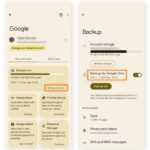Leasing a car has become an increasingly popular alternative to buying, offering a way to drive a new vehicle without the long-term commitment and hefty upfront costs of ownership. But if you’re new to the concept, understanding how car leasing works can seem a bit daunting. This guide will break down the process, key terms, and what you need to know to decide if leasing is the right option for you.
At its core, leasing a car is essentially a long-term rental. Instead of buying the vehicle, you pay for the depreciation – the difference between the car’s initial value and its expected value at the end of the lease term. Think of it like renting an apartment versus buying a house; you’re paying to use the car for a set period, but you don’t own it at the end.
Several key factors determine the cost of your car lease. These include:
- Capitalized Cost: This is the agreed-upon price of the car you are leasing. Just like buying, this is negotiable.
- Residual Value: This is the predicted value of the car at the end of your lease term, as determined by the leasing company. A higher residual value means lower depreciation, and thus, lower monthly payments.
- Money Factor: This is essentially the interest rate you pay on the lease, although it’s presented as a small decimal. To get a rough estimate of the annual interest rate, multiply the money factor by 2400.
- Lease Term: This is the length of your lease, typically expressed in months (e.g., 24, 36, or 48 months). Longer lease terms usually mean lower monthly payments, but you’ll pay more in interest over time.
- Mileage Allowance: Leases come with restrictions on how many miles you can drive per year. Exceeding this allowance results in per-mile charges at the end of the lease.
The process of leasing a car generally involves these steps:
- Choose Your Car: Just like buying, you’ll start by selecting the make and model of the car you want to lease.
- Negotiate the Lease: Negotiate the capitalized cost of the vehicle. Don’t just focus on the monthly payment; understand the overall lease terms.
- Credit Application and Approval: The dealership will run a credit check to determine your lease eligibility and interest rate (money factor).
- Review and Sign the Lease Agreement: Carefully read the lease contract, paying attention to all terms, conditions, mileage limits, and fees.
- Insurance: You’ll need to maintain car insurance throughout the lease term, often with specific coverage requirements from the leasing company.
- Make Monthly Payments: You’ll make monthly lease payments for the duration of your lease term.
- End of Lease Options: At the end of the lease, you typically have options to return the vehicle, purchase it at a predetermined price, or lease a new car.
Leasing can be a good option for those who like driving new cars frequently, prefer lower monthly payments compared to buying, and don’t drive excessive miles. However, it’s important to be aware of potential drawbacks, such as mileage restrictions, wear-and-tear charges, and not building equity in an asset. Understanding how car leasing works empowers you to make an informed decision that aligns with your financial situation and driving needs.
